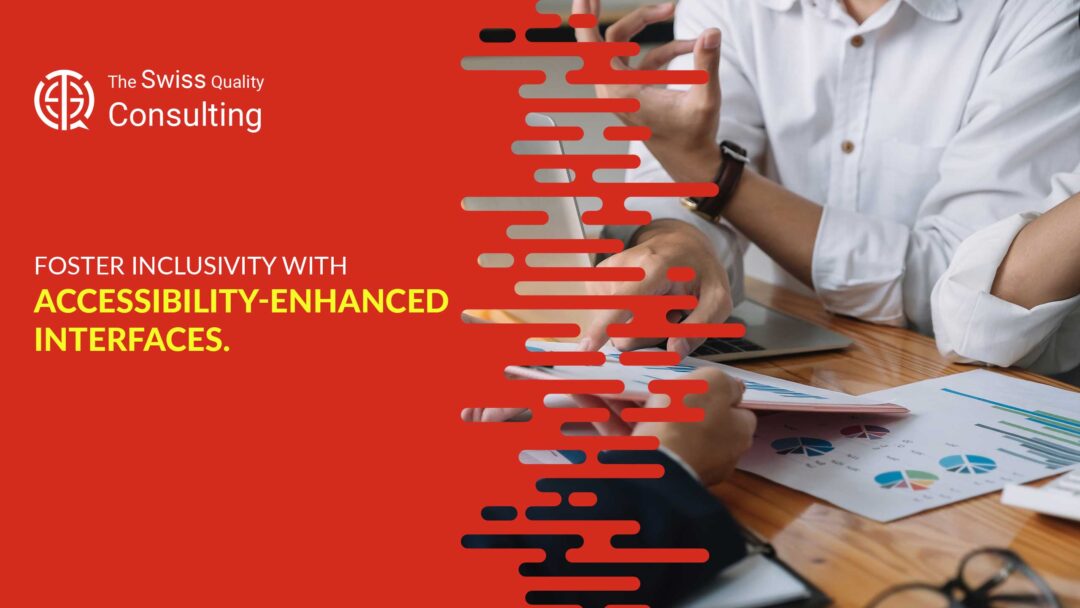Embracing Inclusivity Through Accessibility-Enhanced Interfaces
Introduction
In today’s business world, accessibility-enhanced interfaces play a crucial role in fostering inclusivity. This article aims to enlighten business executives, mid-level managers, and entrepreneurs on the importance of integrating accessibility into their digital platforms to promote an inclusive work environment.
The Importance of Accessibility in Modern Business
In the pursuit of inclusivity and equitable access to information, accessibility-enhanced interfaces have emerged as a cornerstone of responsible design and a driving force for social progress. These thoughtfully crafted interfaces go beyond mere compliance with accessibility guidelines; they embody a commitment to creating a digital world where everyone, regardless of their physical or cognitive abilities, can seamlessly navigate, interact, and engage with technology.
At the heart of accessibility-enhanced interfaces lies the philosophy of universal design, which advocates for creating products and services that can be used by the widest possible range of people without the need for adaptation or specialized solutions. This approach recognizes the diversity of human needs and abilities, ensuring that technology serves as a bridge rather than a barrier for individuals with disabilities.
The benefits of accessibility-enhanced interfaces extend far beyond the realm of compliance and social responsibility; they represent a strategic business decision that enhances brand reputation, fosters customer loyalty, and expands market reach. By embracing inclusive design principles, organizations demonstrate their commitment to creating a welcoming and accessible environment for all, fostering trust and loyalty among a broader customer base.
Moreover, accessibility-enhanced interfaces play a pivotal role in unlocking new market opportunities and expanding customer segments. By ensuring that their products and services are accessible to individuals with disabilities, organizations can tap into a vast, often overlooked, market segment, representing a significant source of untapped potential and revenue growth.
In essence, accessibility-enhanced interfaces are not just a matter of compliance or social responsibility; they are a testament to the transformative power of inclusive design. By embracing accessibility, organizations can create a more equitable and inclusive digital world, while simultaneously reaping the rewards of enhanced brand reputation, expanded market reach, and sustainable business growth.
Breaking Barriers to Inclusion
By implementing accessibility features, businesses break down barriers, allowing for a diverse range of individuals to contribute and benefit from their services and products.
Impact on Change Management
Incorporating accessibility-enhanced interfaces is a significant aspect of change management. It represents a shift towards a more inclusive and diverse organizational culture, which is essential in today’s global business environment.
Driving Organizational Transformation
Adopting accessible interfaces can drive meaningful organizational change, positioning companies as socially responsible and forward-thinking.
Role in Executive Coaching and Leadership
For leaders and managers, understanding the value of accessibility-enhanced interfaces is crucial. Executive coaching services are increasingly focusing on training leaders to recognize the importance of inclusivity and accessibility in driving business success.
Cultivating Inclusive Leadership
Leaders are taught to view inclusivity as a core value, ensuring their strategies and decisions consider the needs of all stakeholders, including those with disabilities.
Enhancing Communication with Accessibility
Effective communication is a cornerstone of business success. Accessibility-enhanced interfaces ensure that communication is inclusive, reaching a broader audience and facilitating better understanding and engagement.
Creating a Unified Work Environment
Accessible interfaces play a vital role in creating a unified work environment where all employees, regardless of their abilities, can contribute effectively.
Generative AI and Accessibility
Generative Artificial Intelligence (AI) is increasingly being used to improve the accessibility of digital interfaces. AI can adapt interfaces to individual needs, making them more intuitive and user-friendly for people with disabilities.
Personalizing User Experiences
Generative AI can personalize user experiences, ensuring that accessibility is not a one-size-fits-all solution but is tailored to meet diverse needs.
Conclusion
In conclusion, accessibility-enhanced interfaces are a vital component of fostering inclusivity in the business world. By embracing these interfaces, businesses not only comply with legal standards but also demonstrate a commitment to social responsibility and inclusivity.
#AccessibilityInBusiness, #InclusiveDesign, #DigitalInclusion, #BusinessInnovation, #LeadershipDevelopment

